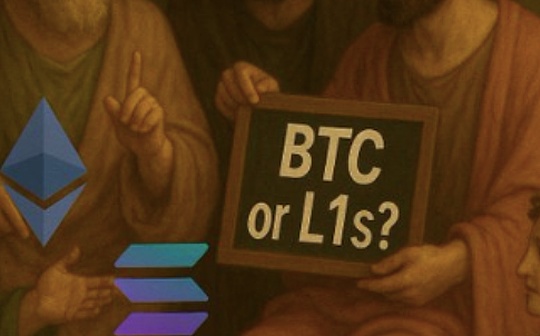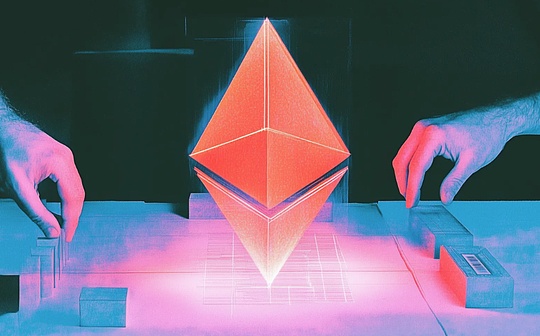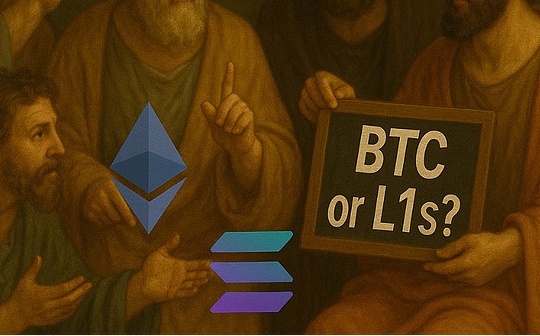
Source: Permadao
The first principle of blockchain is a decentralized bookkeeping method, and “block” and “chain” are not necessary.
What is first principle
First Principle Thinking refers to the most basic conditions for returning things to disassemble them into each element for deconstruction and analysis, so as to find the method of achieving the optimal path of the targetEssenceThe principle originated from the ancient Greek philosopher Aristotle, and was understood by the public because of Elon Musk’s respect.This principle is also related to the “” Tao “in Eastern Philosophy.
In 2014, Elon Musk said at his graduation speech at the University of Southern California.
“Maybe you listen to me, thinking about the problem from the perspective of physics, this is the first principle. That is, do not conduct analogy reasoning. You segmented things to the most basic element you can imagine, and then you start reasoning from there to reason from reasoning.This is a good way to determine whether something is meaningful.Thinking method. This framework is proposed and developed by physicists, so they find out the anti -intuitive things, such as quantum mechanics.”
Musk takes a vacuum capsule high -speed rail as an example. If you design new train products with more thinking or experience thinking, the idea of most people is to improve the existing functions, making power stronger and better fluid mechanics.However, if the product needs are analyzed by the first principle, you must return to the essential purpose of the transportation tool: transport more goods from point A to point B. This is the purpose of creating transportation such as trains. It is not necessary to use itTreatment can be upgraded.With the support of the first principle, Musk proposed the use of magnetic suspension and low vacuum model to create a vacuum capsule high -speed rail.
The first principle in the blockchain
So what is the first principle of blockchain?
Dr. Xiao Feng said at the closing ceremony of the 2024 Hong Kong Web3 Carnival in the Hong Kong Web3 Carnival:The first principle of the blockchain is the new method of bookkeeping.
“The blockchain came out in 2009, as a distributed ledger (DLT), recorded digital value and network value, and no longer accounting on private ledger, but on the open and transparent global public ledger. EveryoneIn a bookkeeping, all stakeholders will account for a ledger.of.”
The author agrees with Dr. Xiao Feng’s point of view, and further elaborates the nature of the blockchain based on this point.
In terms of the three words “blockchain”, it is a block + chain. Since the first principle of the blockchain is a way of bookkeeping, is it really necessary for blocks and chains?
Before answering this question, we first look at Bitcoin as a distributed ledger.
In Bitcoin, the block is a number of digital records containing a set of transaction information. It can be understood as a page of accounts in the ledger. Using the hash function can calculate a hash value.With a slight change of content, the hash value becomes different.Each block contains the hash value of the previous block, which can be understood as the first line of the n+1 block.structure.
In Bitcoin, the mechanism of synchronous ledger is the POW consensus mechanism.When trading occurs in the Bitcoin network, these transactions will be put in memory pools.The miner then selected a set of transactions from the memory pool and tried to form a new block.To do this, miners need to find a specific value in the random number, and combine this specific value with block data to generate a hash value that meets the difficulty of network difficulty.”Whoever calculates the qualified hash value first obtains the right to bookkeeping, that is, the success of mining.The difficulty goal is a dynamic value. It is adjusted every 2016 blocks (about two weeks), so that the average output time of Bitcoin is maintained at about 10 minutes.
Blocks and chains are the infrastructure of Bitcoin. POW is the consensus mechanism of Bitcoin. The combination of the two realizes the decentralized bookkeeping function of BitcoinEssenceHowever, from the essence of the blockchain, as long as it can achieve decentralized bookkeeping, the accounting can be non -block (such as a single transaction consensus), and the ledger can also be a non -chain structure (such as DAG).Therefore, blocks and chains are not necessary, but the words of the blockchain are deeply rooted in the hearts of the people. They have become the reputation of decentralized ledger represented by Bitcoin, Ethereum, and Solana.
After all, Bitcoin is already the product of 2009. With the continuous development of blockchain research, although most blockchain still follows the structure of traditional block+ chain, there are also some districts designed in the first principle.Blockchain, starting from the most fundamental decentralized accounting problem, has unique data structure and consensus. This article takes SUI and Arweave Ao as an example.
SUI: Water Way

SUI is a Layer1 based on the first principle. The main team comes from the DIEM and Novi projects that have been dissolved in Facebook (later renamed Meta).SUI’s name comes from water in Japanese, and the impact of water can also be seen in its brand image.
SUI uses SUI Move to write its smart contracts, using an object -based data model. All transactions use objects as inputs, and produce new or modified objects as output, allowing independent objects to process transactions parallel.
In SUI MOVE, each smart contract is a module, consisting of function and structure definition.The structure is instantiated in the function, and the function can be passed to other modules through function calls.The structural instance of the storage during runtime is used as an object, and there are three different types of objects in the SUI, namely the owner’s object, sharing objects and non -changing objects.
SUI does not have a block, a separate verification of the transaction, and whether a transaction has undergone SUI’s sorting and consensus mechanism depends on whether the object in the transaction is shared or non -shared.
If it does not involve the transaction of the shared object, it is called a simple transaction, the SUI uses the lightweight algorithm of Byzantine Consistent BroadcastRefer to FastPay’s design ideas.The client broadcasts all the verifications of the SUI, and collects the authenticated voting based on equity -based equity, generates a certificate, and then broadcasts the certificate back to the verification person.
If the transactions involved in the shared object are called complex transactions, SUI uses narwhal & amp; bullshark consensus mechanismEssenceNarwhal is a MEMPOOL module responsible for ensuring the availability of transactions.Narwhal operates based on rotation. Each round is divided into two steps, which are transactions (synchronous transactions to other nodes) and transaction verification (collecting other nodes of transactions). After multiple rounds, the transaction will form a one to form a one.There is no loop graph (DAG).Bullshark is a consensus module that is responsible for sorting DAG transactions in Narwhal.

SUI uses DAG to spread and consensus on transactions, reducing transaction delays and reducing network overhead during communication.At the same time, in order to maintain the integrity and order of historical information, the SUI sorts the transaction as a checkpoint in a separate process, and the checkpoint links with each other in a linear manner.Essence
However, in fact, the data structure of the SUI is completely different from the traditional blockchain. The transaction from the SUI grouping to the checkpoint has finally been determined, and the traditional blockchain is to group the transaction that has not yet been finalized into the block.
Arweave ao: empty way

Water is not normal, but after all, it is tangible.Just like the SUI also retains the consensus mechanism in the traditional blockchain, and finally organizes transaction data into a block + chain structure of traditional blockchain.AO completely subverts the paradigm of traditional blockchain.Compared to water, AO is closer to the sky in the symbolic sense (Japanese is Sora)Essence
AO is a computing system based on arweave -based distribution, decentralization, and Actor Oriented.Its first principle is not to build a decentralized ledger, but to build a decentralized computing system.Probably similar to the relationship between applications and operating systems.
The computing system can be split into three problems: storage, computing, and communication. There are very mature solutions in Web2. The difficulty is decentralization.One idea is to build a decentralized storage network, a decentralized computing network, and a decentralized communication network. This is actually the computing, storage and communication trio of the calculation, storage and communications of the co -founder of Ethereum in 2014The idea of decentralized technology architecture isEthereum (smart contract)Responsible for decentralized calculation, Swarm is responsible for decentralized storage, and Whisper is responsible for decentralized communication.

AO is also composed of three units:

-
Communication unit (Messenger Unit): Responsible for message communication, pass the message to the calculation unit and coordinate to calculate the output results;
-
Scheduler Unit: Responsible for scheduling and message sorting, and upload the message to Arweave.
-
Calculation unit (Compute Unit): Responsible for processing calculation and uploading the calculation results to Arweave.
A process on a AO consists of a set of units. Each unit can be used as a horizontal expansion subnet, and a large number of transactions can be performed at the same time to achieve high -performance calculations, but each unit is not a decentralized network.In fact, in the entire AO architecture, only the real decentralization is the storage network Arweave as the bottom.
The process on the AO has the upload of its holographic data to Arweave, so that it has verified attributes -because anyone can recover this process on AO through the holographic data.This is actually a kind ofStore consensus paradigm (SCP)That is, as long as the storage is immutable, the above transactions are traceable, so no matter where you calculate the application, the same results will be obtained.
AO has no consensus mechanism, but through SCP, the calculation layer is separated from the storage layer to make the storage layer permanently decentralized, and the computing layer maintains the traditional computing layer mode.Therefore, there is no type of restriction on the computing expansion on AO, which can not only realize the blockchain account service with EVM, WASM, or MOVE virtual machine as the core.Decentralized version.
Summarize
The primary principle is to think about the essence of things from the perspective of physics, and then from the essence, designed upwards.Although SUI and Arweave Ao are both based on the blockchain designed by the first principle, because their essence is different, they have designed a completely different structure.
The essence of SUI is decentralized ledger service. The target is high -performance Layer1 like Solana. Therefore, SUI designed object -oriented data models, dual consensus mechanisms, and state -based access transactions based on “faster ledger service”.The parallel execution improves scalability, while reducing delay and cost.Let developers develop applications based on SUI MOVE smart contracts quickly and at low cost.
The essence of Arweave Ao is decentralized computing system, or decentralized cloud service, which is an infrastructure that runs the ledger service. Therefore, AO proposes SCP around the “verified distributed computing system”, that is, under the chainCalculate the storage on the chain to achieve the interconnection and collaboration of large -scale parallel computers.The user experience is almost consistent with the traditional cloud service, but behind it is a decentralized computing system.







